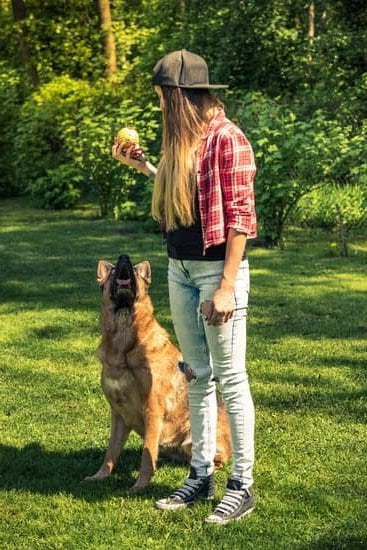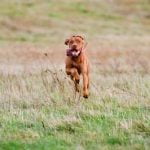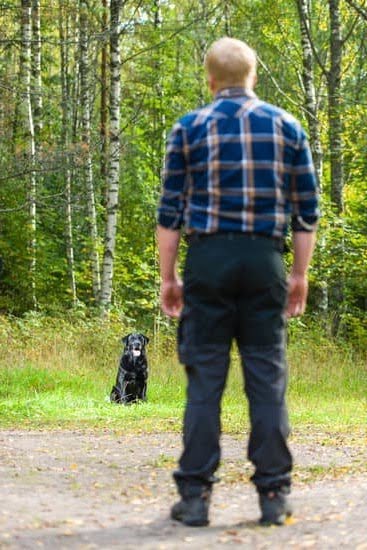Are you struggling to house train your furry friend? Look no further. In this article, we will explore how to house train your dog with a clicker. Clicker training is a popular and effective method for teaching dogs new behaviors, including the essential skill of using the bathroom outdoors. By understanding the concept of clicker training, you can set your canine companion up for success in their house training journey.
Before delving into the specifics of clicker training for house training, it’s important to grasp the basics of clicker training itself. What exactly is a clicker, and how does it work in dog training? We will cover these fundamental questions as we lay the groundwork for utilizing this innovative technique to teach your dog proper bathroom etiquette.
Once you have a solid understanding of clicker training, we will move on to setting up for success in house training with a clicker. This section will provide valuable insights into preparing your home environment to facilitate effective and efficient house training.
From establishing a routine to implementing clicker training techniques, we’ll equip you with the knowledge and strategies necessary to make this process as smooth as possible. Stay tuned for expert tips on troubleshooting common challenges and maintaining consistency throughout the entire house training journey.
The Basics of Clicker Training
Clicker training is a popular and effective method for house training your dog. This form of positive reinforcement involves using a small device called a clicker, which makes a distinct clicking sound when pressed.
The concept behind clicker training is to pair the sound of the clicker with a specific behavior that you want to reinforce in your dog. When your dog performs the desired behavior, you immediately click the clicker to mark the behavior as correct, followed by offering a treat or reward.
What Is a Clicker?
A clicker is a simple handheld device that typically consists of a small plastic box with a metal tongue that, when pressed, produces a sharp clicking sound. The purpose of the clicker is to provide consistent and immediate feedback to your dog when it exhibits the desired behavior. It serves as a clear and precise signal to let your dog know exactly what it did right.
How Does Clicker Training Work?
Clicker training works by associating the clicking sound of the device with positive reinforcement for good behavior. When your dog performs an action that you are trying to train, such as sitting on command or going potty outside, you immediately follow up with a click from the clicker.
This marks the exact moment your dog did what you wanted and communicates that they will be rewarded for that action. Over time, your dog comes to understand that when they hear the click, they’ve done something right and can expect praise or treats as a result.
By understanding how to effectively use a clicker in training your pet and providing appropriate rewards, you can set yourself and your pet up for success in house training using this method.
Setting Up for Success
House training a dog with a clicker involves more than just the actual training sessions. Setting up your home for success is an important step in ensuring that your dog learns quickly and effectively. Here are some tips for preparing your home for house training using a clicker:
- Designate a specific potty area: Choose a spot in your yard where you want your dog to go potty and take them there consistently. This will help them understand where they are supposed to do their business.
- Remove indoor potty options: If you have pee pads or indoor grass patches for your dog, remove them from the house during the training period. This will help prevent confusion and encourage your dog to only go outside.
- Use baby gates or confinement areas: Until your dog is fully trained, it can be helpful to use baby gates or designate a specific area of the house where they can stay when unsupervised. This will limit accidents and give you better control over their behavior.
In addition to these steps, it’s important to make sure you have all the necessary tools for house training with a clicker. This includes having plenty of treats on hand for rewards, as well as a consistent feeding schedule to regulate when your dog will need to go outside.
By setting up your home in this way, you are creating an environment that supports the house training process and makes it easier for your dog to understand what is expected of them.
Remember, consistency is key when preparing your home for house training with a clicker. The more consistent you are in establishing routines and providing clear cues for your dog, the faster and more effectively they will learn.
Establishing a Routine
Set Regular Meal Times
Start by establishing regular meal times for your dog. By feeding your dog at the same times each day, you can create a predictable bathroom schedule. Most dogs will need to eliminate shortly after eating, so feeding them on a consistent schedule can make it easier to anticipate when they will need to go outside.
Take Regular Potty Breaks
In addition to regular meal times, it’s important to take your dog outside for potty breaks at consistent intervals throughout the day. This may include first thing in the morning, after meals, before bedtime, and every few hours in between. Use the clicker to reinforce good behavior when your dog eliminates outdoors.
Use the Clicker as a Time Marker
The clicker can also be used as a time marker during house training. When taking your dog outside for a potty break, use the clicker to mark the moment when they start eliminating. This can help reinforce the behavior and teach your dog to associate the click with going potty in the appropriate place. Over time, this association can help speed up the house training process.
By establishing a consistent routine and using the clicker as a tool for reinforcement, you can effectively house train your dog using positive and consistent methods. With patience and dedication to maintaining the schedule, your furry friend will soon develop good bathroom habits and become reliably house trained.
Clicker Training Techniques
When it comes to clicker training for house training your dog, understanding how to use the clicker effectively is essential. The clicker is a small handheld device that makes a distinct clicking sound when pressed. It works as a marker to let your dog know when they have performed a behavior correctly and will be followed by a reward. Here’s a step-by-step guide on using the clicker to reinforce desired behavior:
1. Charge the Clicker: Before you can start using the clicker for training, you’ll need to “charge” it first. This simply means associating the clicking sound with something positive, like treats. To do this, sit with your dog in a quiet environment and press the clicker, then immediately give them a treat. Repeat this process several times until your dog starts to associate the click with receiving a reward.
2. Start Small: Begin by teaching your dog simple behaviors using the clicker, such as sitting or coming when called. When your dog performs the desired behavior, immediately press the clicker then give them a treat as reinforcement. This helps them understand that the clicking sound means they’ve done something right and that a reward is coming.
3. Be Consistent: It’s important to use the clicker consistently and only for positive reinforcement during training sessions. Avoid using it for negative behaviors or without following up with a reward, as this can confuse your dog and diminish the effectiveness of the clicker as a marker.
Using these techniques along with patience and consistency can help you effectively reinforce desired behaviors in your dog through clicker training for house training purposes.
Troubleshooting
House training a dog with a clicker can be an effective and rewarding experience, but it’s not without its challenges. Like any form of training, there may be obstacles along the way that can make the process more difficult. However, by being prepared for common challenges and knowing how to address them, you can set yourself and your furry friend up for success.
One common challenge when house training with a clicker is inconsistency in reinforcement. It’s important to remember that timing is crucial in clicker training, and if your timing is off or you forget to use the clicker at the right moment, it can confuse your dog and slow down their progress.
To address this, it’s essential to stay focused during training sessions and be consistent with your use of the clicker. Additionally, practicing proper timing during short and frequent training sessions can help improve your skills over time.
Another challenge that dog owners may face when using a clicker for house training is environmental distractions. Dogs are naturally curious creatures, and they can easily become distracted by various sounds, smells, or even other pets in the home.
To tackle this challenge, it’s important to start training in a quiet and familiar environment before gradually introducing distractions. Additionally, using higher value treats as a reward during training sessions can help keep your dog focused on the task at hand.
Finally, some dogs may exhibit fear or anxiety when introduced to new training methods such as clicker training. This can manifest in behaviors such as cowering, trembling, or even avoidance of the clicker itself. To address this challenge, it’s crucial to introduce the clicker gradually and associate it with positive experiences through desensitization techniques.
This involves pairing the sound of the clicker with something pleasant (e.g. treats) to create positive associations and reduce fear or anxiety over time. With patience and persistence, most dogs can overcome their initial apprehension towards the clicker.
Consistency Is Key
Consistency is vital when it comes to maintaining the house training of your dog using a clicker. Once you have established a routine and started with clicker training techniques, it is essential to stay consistent with your approach.
Dogs thrive on routine and structure, so any inconsistency in your training can lead to regression in their behavior. This means that everyone in the household should be on the same page when it comes to using the clicker and reinforcing house training.
In order to maintain the training, it is important to continue providing positive reinforcement for good behavior. This can be done by consistently using the clicker and following up with a treat or praise every time your dog exhibits the desired behavior. It’s also crucial to avoid inadvertently rewarding undesirable behaviors by ensuring that everyone in the household understands which behaviors should be reinforced.
Preventing regression in house training involves being proactive and attentive to your dog’s needs. Keep an eye out for any changes in behavior or patterns that may indicate a need for adjustment in your training approach. If you notice any signs of regression, such as accidents in the house, it’s important to address them immediately and re-evaluate your training methods if necessary.
| Concept | Description |
|---|---|
| Consistency | Maintaining a regular and unchanging approach to training. |
| Positive Reinforcement | Rewarding desired behavior with treats or praise. |
| Regression | A return to previous undesirable behavior after initial improvement. |
Celebrating Success
Clicker training for house training your dog is not just about correcting unwanted behavior, but also about celebrating successes. Positive reinforcement is a powerful tool in dog training, and the clicker can be used to mark and reward good behavior. When your dog successfully follows the house training routine, it’s important to acknowledge and reward that behavior to reinforce it.
One of the key aspects of celebrating success with clicker training is using rewards effectively. Whether it’s verbal praise, treats, or extra playtime, rewards should be something that motivates your dog and reinforces the desired behavior. The timing of the reward is also crucial – it should immediately follow the desired behavior and be clearly associated with it. This helps your dog understand what they did right and encourages them to repeat that behavior in the future.
In addition to rewards, positive reinforcement can also come in the form of physical affection such as petting or a belly rub. Dogs respond well to affection from their owners, and using both physical rewards and treats can help create a balanced approach to celebrating success in clicker training for house training. Consistency in rewarding good behavior will further strengthen the association between the clicker, the desired action, and the positive outcome.
| Positive Reinforcement Methods | Description |
|---|---|
| Verbal praise | A simple “good boy/girl” or similar phrase spoken enthusiastically |
| Treats or favorite toys | Using food treats or beloved toys as a reward for good behavior |
| Physical affection | Petting, cuddling, or playing with your dog as a form of positive reinforcement |
Conclusion
In conclusion, using a clicker for house training your dog offers numerous benefits. The clear and consistent sound of the clicker helps to effectively communicate and reinforce the desired behavior, making it easier for your dog to understand what is expected of them. Clicker training also promotes positive reinforcement, creating a more enjoyable and rewarding experience for both you and your furry companion.
One of the key advantages of clicker training is its ability to establish a strong bond between you and your dog. By consistently using the clicker to signal their good behavior, you are building trust and understanding with your pet. This form of communication can lead to a deeper connection and better cooperation in all aspects of training.
As you continue with clicker training for house training your dog, remember that patience and consistency are essential. Every dog learns at their own pace, so it’s important not to get discouraged by setbacks or challenges along the way. By staying committed to the process and following through with the techniques outlined in this article, you’ll be setting yourself up for success in house training your beloved pet. Happy clicking.
Frequently Asked Questions
Do Clickers Work With Potty Training?
Clickers can be effective tools for potty training, especially when used in conjunction with positive reinforcement. When a dog successfully eliminates in the desired spot, the clicker is used to mark the behavior, followed by a reward. Over time, the dog will associate the clicking sound with the desired behavior and be more likely to repeat it.
Is Using a Clicker Good for Dog Training?
Using a clicker can be very effective for dog training. The clicker provides a precise, consistent sound that marks the exact moment the dog performs the desired behavior.
This makes it easier for the dog to understand which action is being rewarded. Clicker training is especially useful for teaching new commands or tricks as it helps to capture and reinforce specific behaviors.
How Do You Clicker Train a Dog for Beginners?
To start clicker training a dog, beginners should first introduce the dog to the clicker using a process called “charging” the clicker. This involves clicking and immediately offering a reward without asking for any specific behavior, allowing the dog to associate the click with something positive.
Once this association is established, beginners can start using the clicker to mark and reinforce desired behaviors through consistent practice and rewards. As with any new skill, patience and consistency are key to successfully clicker training a dog.

Welcome to the blog! I am a professional dog trainer and have been working with dogs for many years. In this blog, I will be discussing various topics related to dog training, including tips, tricks, and advice. I hope you find this information helpful and informative. Thanks for reading!





